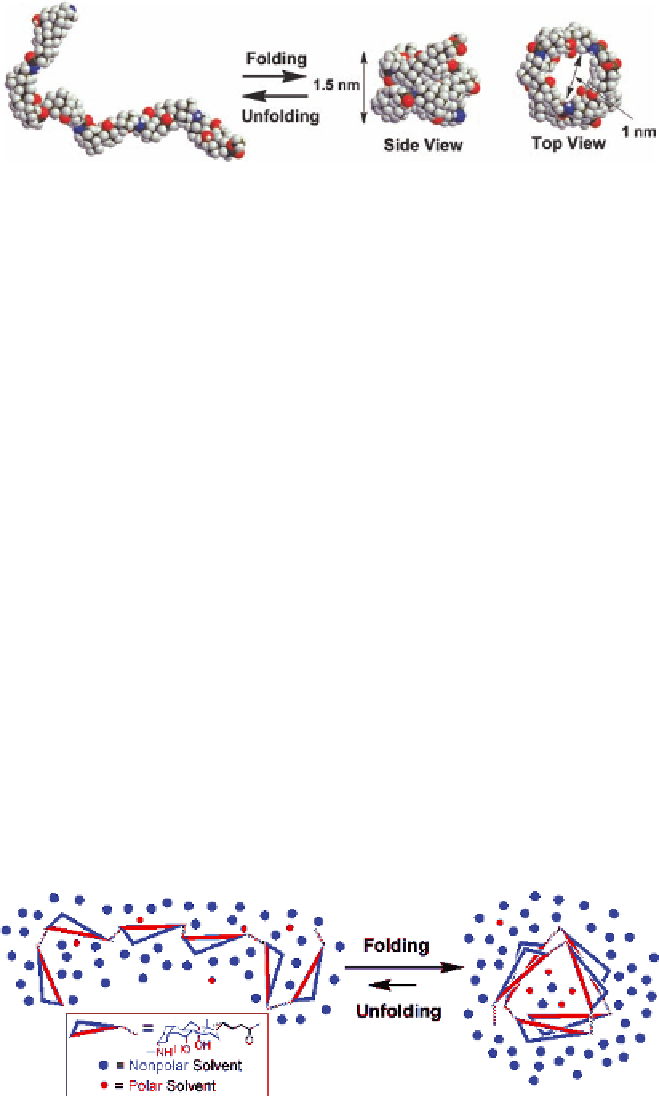Chemistry Reference
In-Depth Information
Figure 12.5 Space-filling molecular models of the unfolded and folded cholate hexamer.
Reprinted with permission from [ref 55] Copyright 2007 American Chemical Society.
hydrophilic faces of an oligocholate prefer to be solvated by the polar solvent but cannot
do so in the unfolded conformation (Figure 12.6, left). To avoid the unfavorable hydro-
philic-hydrophobic contact, the oligocholate folds into a helical structure, with the polar
solvent microphase-separated from the bulk and placed in the internal nanocavity of the
folded helix (Figure 12.6, right). Such an arrangement efficiently satisfies the needs of
both the cholate hydrophilic faces to be solvated by polar solvent in a nonpolar mixture
and the polar solvent to be located in a polar environment. Because folding requires phase
separation of the polar solvent, formation of the helix is most favorable in a solvent mix-
ture with marginal miscibility. Folding, for example, was more favorable in a 2 : 1 mixture
of hexane and ethyl acetate (EA) than in a 1 : 1 mixture when the polar solvent was
dimethyl sulfoxide (DMSO) or methanol [54]. This is because the polar solvent is misci-
ble with EA but immiscible with hexane: as the amount of hexane increases in the ternary
mixture, phase separation of the polar solvent becomes easier energetically.
The solvophobic folding of the parent oligocholates is extremely sensitive to solvent
composition, with a few percentage change being typically sufficient to trigger complete
unfolding [54-56]. Because the oligocholates are connected by amide bonds, their
functionalization could be readily achieved by the incorporation of natural a-amino
acids. Oligocholate
12
contains two methionines in the middle and a dansyl at the
chain end [57]. Similar to the parent cholate hexamer,
12
couldfoldin
5% DMSO
<
(or methanol) in 2 : 1 hexane/ethyl acetate [57].
Figure 12.6 Preferential solvation of an oligocholate in a mixture of polar and nonpolar sol-
vents. Reprinted with permission from [ref 55] Copyright 2007 American Chemical Society.

Search WWH ::

Custom Search